Tillandsia, AKA air plants, are so much fun. They are completely unique to the plant world, requiring no soil to survive. But, they do require a different water routine in order to thrive. Follow these steps to water air plants the right way and keep them hydrated and happy all year long.
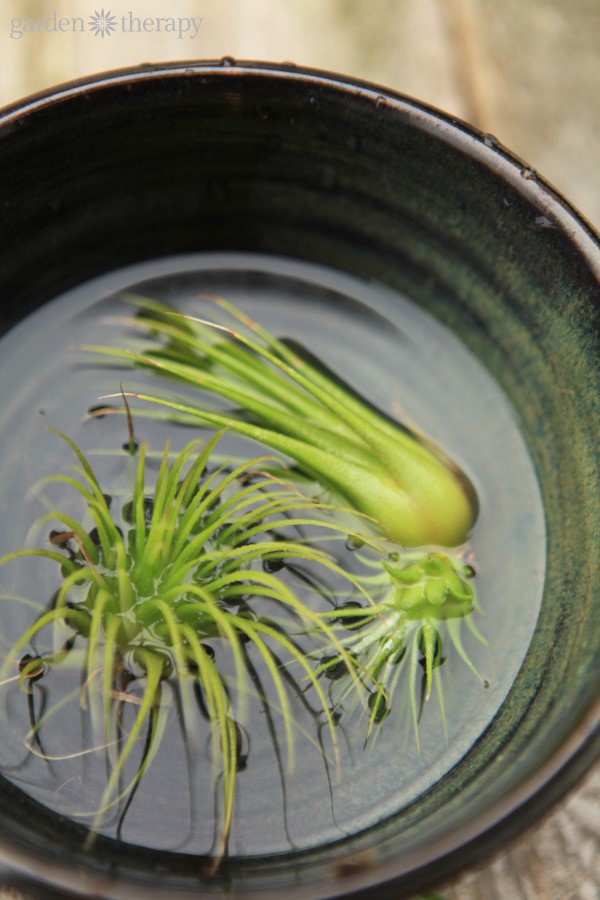
What’s in a Name?
Tillandsia get their more common name, air plant, because they grow without soil in the air. One of the most common misconceptions about Tillandsia comes from their name and the idea that they only need air to survive. However, it really means that they need to absorb moisture through their leaves consistently. This either comes from very high humidity (as in a greenhouse) or from regular soaking.
Their spiky tendrils are oh-so-cool looking and because they don’t need soil to survive, there are endless creative ways to display them, from terrariums to popping them inside seashells. You can even make them into jewelry! They are hardy and easy to care for if you know what to do, and the most common problems that people have with air plants are due to incorrect watering.
When Tillandsia grow in the wild, they absorb moisture from the air which is much more humid than it is indoors, and that is usually where we keep them, so we have to soak them to re-hydrate. But it must be done properly or the air plant will rot!
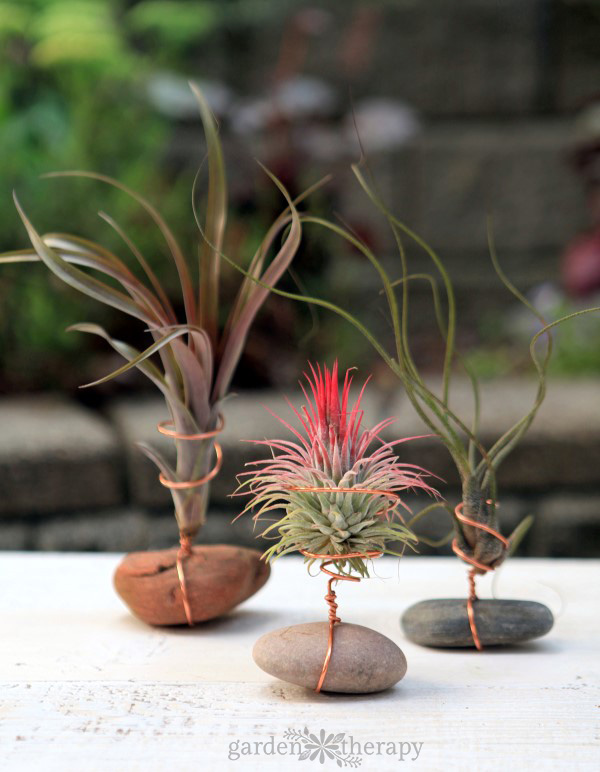
How to Water Air Plants
Water your air plants in the morning to ensure they get enough time to fully dry or it may disrupt their ability to respire at night.
To water air plants, remove them from wherever you have them displayed and submerge in a bowl or sink full of enough water to completely cover them. Parts of the plants will float up above the water—this is okay, just make sure that the majority of each air plant is submerged in the water. Leave them in the bath for one hour.
Remove each plant, hold facing upside down, and shake well to get rid of any excess water that may be pooling at the base of the inner leaves. Then, turn your air plant upside down on a towel and place it in a bright spot. Let it sit for one to three hours, depending on when it is fully dry. Ensure there is no water pooled or else your air plant may rot.
Return your air plants to their regular spot until it is time to bathe them again.
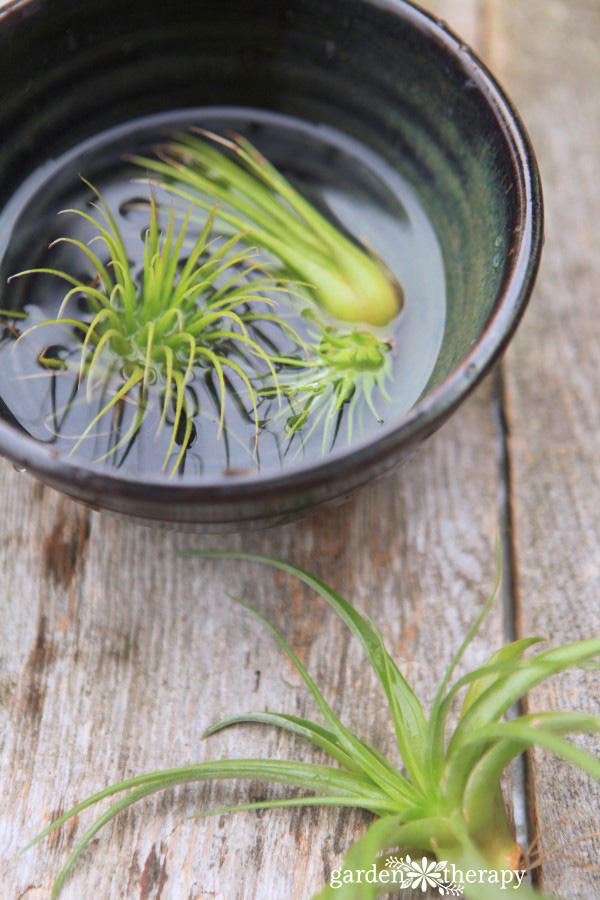
Use the Right Water
Don’t use chlorinated water for your air plants as it can harm them. Instead, use rainwater or filtered water if possible. If you want to use tap water, allow it to sit out in a bowl for 24 hours first so that the chlorine evaporates. Chlorine can turn the tips of the leaves brown.
Change Your Watering Schedule Seasonally
Depending on the season, air plants need to be bathed at different frequencies. In the summer when it is hot, they like to be bathed once a week, but in the cool winter months, once every three weeks or so will do. Pay attention to the changing of the seasons and the health of your air plant and water accordingly.
You will also want to note the location of your air plant. For example, how much light is your plant is receiving? If it’s getting lots of sun, it may need to be watered more often. Is your plant located next to a heater where it may dry out more quickly or do you live somewhere humid where it will require less water? Take the time to evaluate the surroundings of your air plant when thinking about a watering schedule.
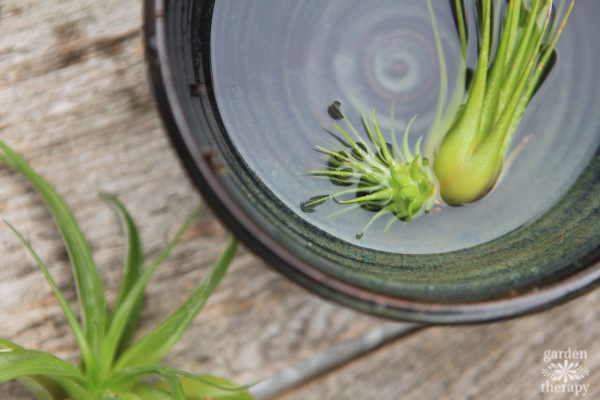
Should I Mist my Air Plants?
Many garden centers or plant stores will tell you to mist your air plant with water from a misting bottle a few times a week. Personally, I do not find this to be very helpful for the plant. Spritzing is just too inconsistent and doesn’t provide the air plant with enough moisture. Misting should not be the only method you use for watering your air plant.
That being said, greenhouses and garden centers just mist them because it is already humid inside a greenhouse. And if you live in a humid climate (or a greenhouse) you can also get away with spritzing them. For air plants adopted as houseplants for the rest of us, the key is soaking them in a bath.
If your air plant is stuck in a terrarium or glued somewhere and it cannot be removed, misting may be your only option. If this is the case, mist very often to ensure it gets as much water as possible without letting water sit in the base. However, I highly discourage placing air plants anywhere where they cannot be removed and bathed!
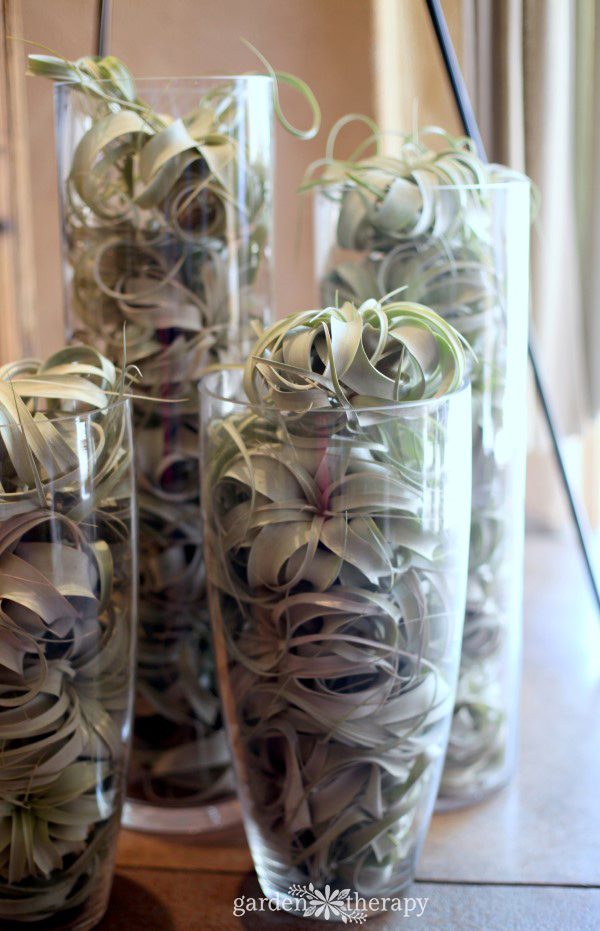
Signs of an Unhappy Air Plant
If your air plant is showing signs of distress, it could be due to watering. Crispy tips that are turning brown could be a sign of under-watering. You will also notice that the air plant’s concave-shape is more noticeable when lacking water.
Signs of over-watering, however, are tricky to undo. If the air plant is rapidly losing leaves and the base has turned black or brown, the air plant has gone rotten. Resist watering and cross your fingers! View my guide on how to revive a sick air plant for more information.
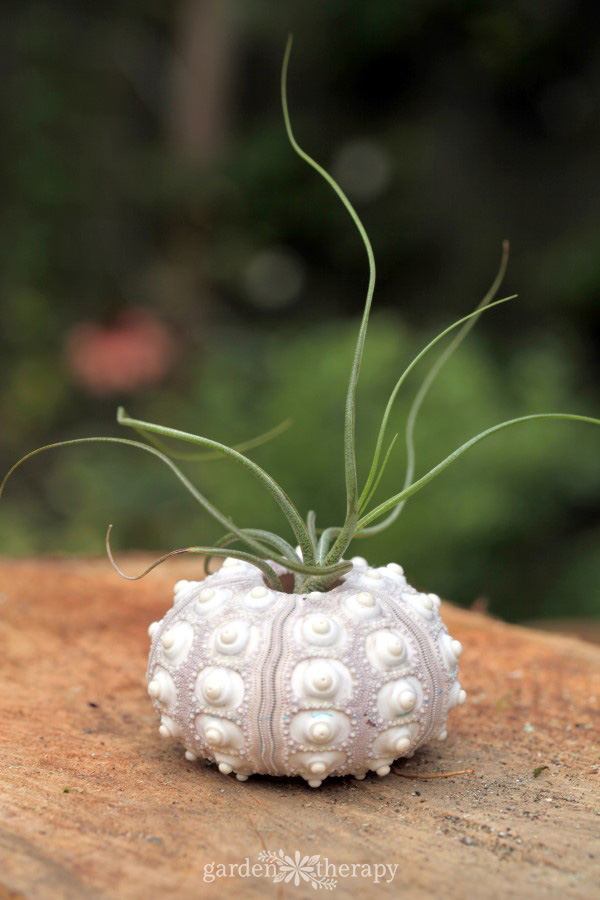

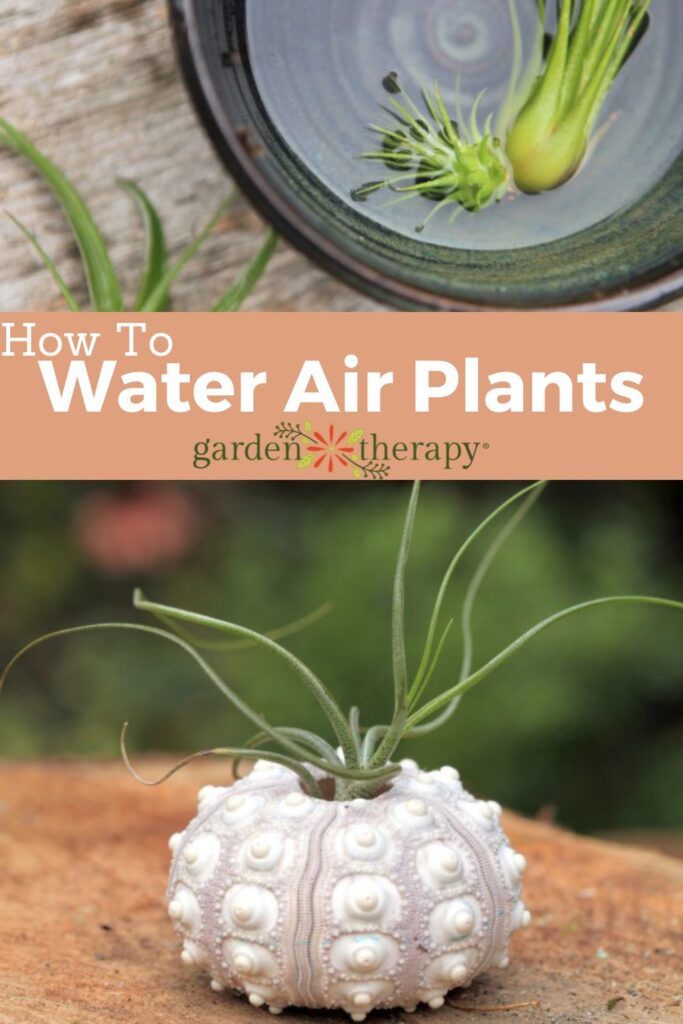
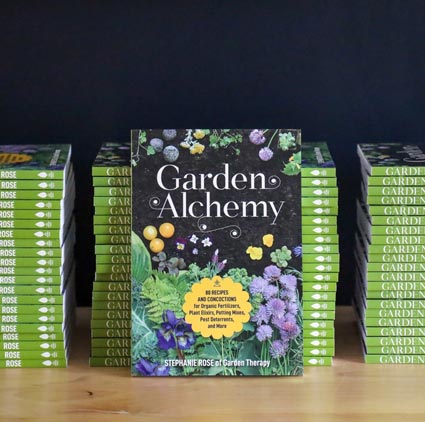


This is a great explanation of how and why you need to water your air plants. Before I purchased mine I thought they lived only on air. Turns out, they are really an unusual and undemanding plant and can really bring out the creativity in anyone.
I killed the first one I had – to much teases from my husband about my black thumb! My daughter bought me another on and I’m misting I’d religiously and the ends are getting crisp so I’ve stepped up the misting. Our house is very warm and dry so I think I’ll try this method. Thank you for the information!
I’m having problem with my Tillandsia, it’s dying on me. I’m misting it twice a week, don’t know what’s wrong! Any advise…
You need to soak it!
Every time I give my airplants a soak that’s when my airplants get rot and die..I think it really depends on the airplant species. My Xerographica survives with just misting 2 times a week while the bulbosa needed a soak
What about the ones that have been (glued) into their container? Purchased like that….
I have just submerged the whole container in water…is that ok? I also have one (Christmas decor) it’s in that plastic white snow stuff inside a glass teardrop ornament, also has some fake holly branches with little LED light string…
I would post pics if I could….????♀️
Hi Dawn, yeah, I wish that people wouldn’t glue them to things! If you can soak the whole plant with thing it’s glued to, that is best. Otherwise try misting or removing it from the glue.